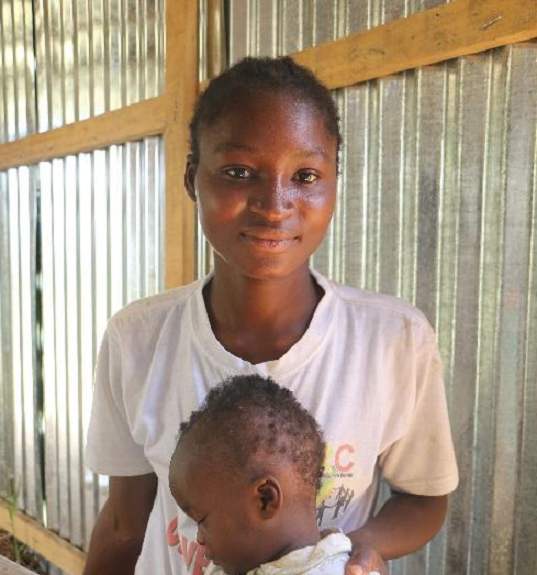Speeches Shim

May 2018 — Violence in the Republic of the Congo’s Pool Department displaced a third of the region’s population in 2016. Grace*, a 21-year-old mother of two, fled her home with her children, seeking refuge in Goma TseTse, near the capital of Brazzaville. More than a year later, when the fighting in Pool subsided, Grace and her children returned home.
Life, unfortunately, did not return to normal. Grace and others came home to find destroyed fields, looted villages, and no seeds or tools for new planting. In a place where nearly 62 percent of the population relies on agriculture as the main source of food and income, this made an already difficult situation worse for Grace and others.
At home, Grace was unable to get enough nutritious food for herself and her children, ages 4 and 19 months. Her youngest daughter, Deogracias, could no longer walk and was losing weight due to chronic diarrhea, and her hair was thinning and turning red — symptoms of severe protein malnutrition known as kwashiorkor. Grace was eventually forced to take her children back to Goma TseTse, where the U.N. World Food Program (WFP), a USAID partner, was distributing food and nutrition assistance.
Through a USAID-supported nutrition program at the Mayama health center, Grace and Deogracias received specially formulated nutrition supplements for several months, allowing Deogracias to gain weight and regain her health.
“Today my daughter has beautiful hair,” Grace beamed. “She no longer has diarrhea and is now walking.”
Grace recounted the difficulty of being a young mother, forced from her home by violence and trying to care for her sick and hungry children. “You cannot imagine how I feel today, when in the past everyone looked at me strangely. I saw pity and sadness in the faces of people looking at me, an inexperienced girl, unable to take care of her malnourished child.”
With USAID assistance, WFP is helping families recover from conflict and displacement in Pool and the neighboring department of Bouenza. The prevalence of acute food insecurity among WFP beneficiaries has fallen from over 50 percent in May 2017 to 13 percent in January 2018. Among internally displaced children younger than 5, acute malnutrition declined from 17.3 percent to under 6 percent in the same period. In fiscal year 2018, USAID and WFP are working together to treat over 7,000 malnourished children younger than 5 with specialized nutritious foods.
Grace’s friends and their children also took part in the WFP nutrition program. “Thank you very much to WFP, because my daughter is doing better today. After seeing these results, my friends followed me,” said Grace.
Since the onset of the crisis in 2016, USAID has contributed over $2.5 million to WFP to respond to the concerning levels of malnutrition and hunger. And today, with the help of a USAID-supported nutrition program, Grace and other young mothers can move forward in their lives without worry over sick and hungry children.
*Last name withheld to protect security.
LINKS
Follow @USAIDFFP, @USAIDAfrica, on Flickr, on YouTube

Comment
Make a general inquiry or suggest an improvement.